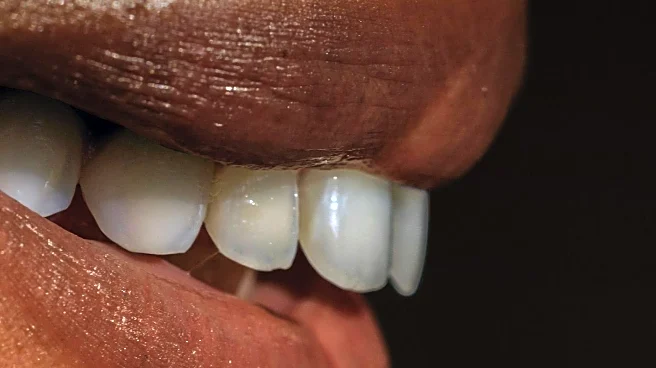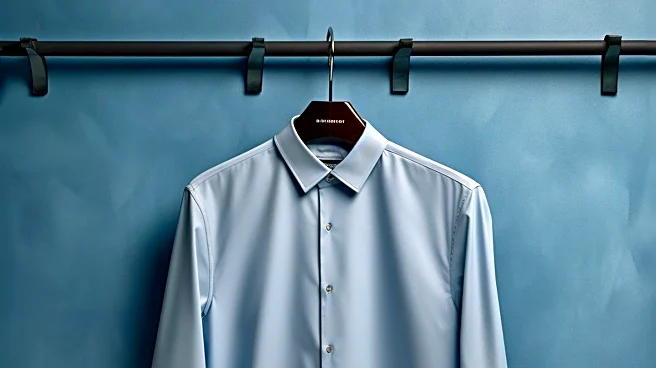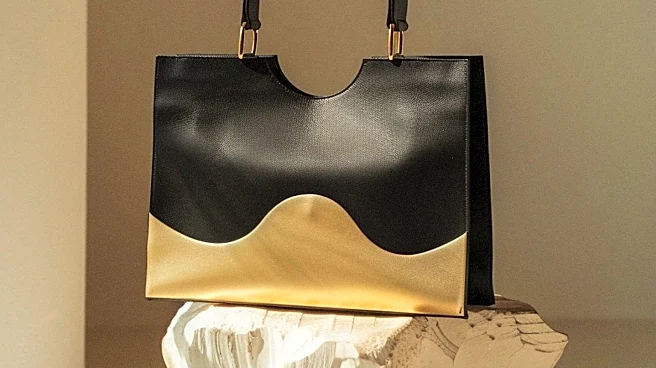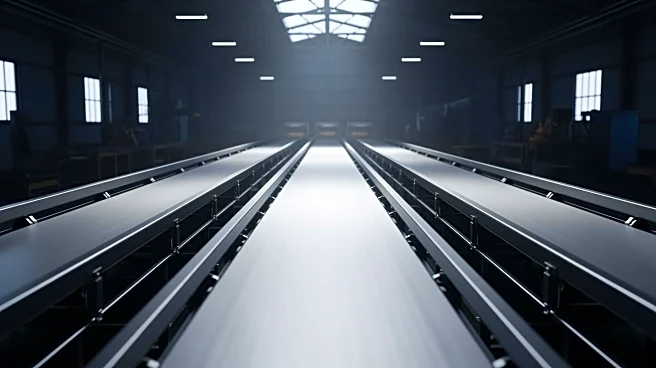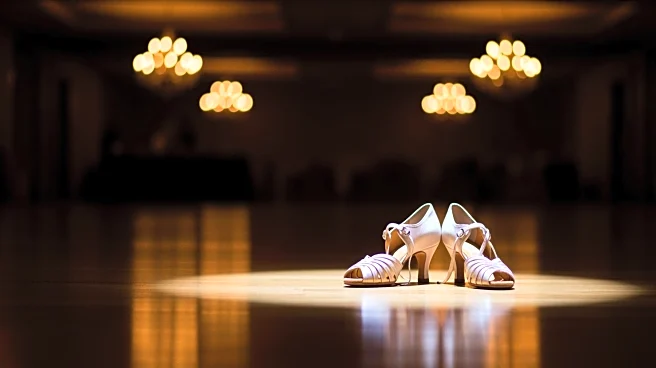What's Happening?
No-prep veneers are gaining popularity as a less invasive cosmetic dental option, aligning with the trend of subtle cosmetic enhancements known as 'quiet glow-ups.' Unlike traditional veneers, which require
tooth shaving and can lead to long-term damage, no-prep veneers offer a similar aesthetic result without the need for filing, drilling, or grinding. This procedure is particularly appealing to individuals who are wary of the irreversible changes associated with traditional veneers. Bryan Johnson, a well-known longevity seeker, is among those advocating for no-prep veneers to improve the whiteness of teeth without shaving them down. Cosmetic dentists like Dr. Lilya Horowitz have noted an increase in patients seeking these low-risk cosmetic tweaks to address issues such as broken, chipped, cracked, or discolored teeth. However, no-prep veneers are not suitable for everyone, especially those with larger or severely discolored teeth, and they can be more expensive than traditional options.
Why It's Important?
The growing interest in no-prep veneers reflects a broader shift in cosmetic dentistry towards less invasive procedures that prioritize long-term dental health. This trend is significant as it addresses concerns about the permanent damage caused by traditional veneers, which involve shaving down teeth. As more individuals become educated about the risks associated with traditional veneers, the demand for conservative options like no-prep veneers is likely to increase. This shift could lead to changes in the cosmetic dentistry industry, with more practitioners offering no-prep veneers and potentially influencing pricing structures. The emphasis on subtle enhancements also mirrors a cultural trend towards natural beauty and minimalism, impacting consumer preferences in cosmetic procedures.
What's Next?
As the popularity of no-prep veneers continues to rise, dental professionals may need to adapt their practices to accommodate this demand. This could involve investing in new technologies and training to ensure the effective application of no-prep veneers. Additionally, the industry might see an increase in research and development efforts to improve the materials and techniques used in these procedures, further enhancing their appeal. Patients considering cosmetic dental work will likely weigh the benefits of no-prep veneers against traditional options, leading to more informed decision-making. The trend towards less invasive procedures may also influence other areas of cosmetic surgery, encouraging a broader move towards subtle enhancements.
Beyond the Headlines
The shift towards no-prep veneers highlights ethical considerations in cosmetic dentistry, particularly regarding patient education and informed consent. As patients become more aware of the risks associated with traditional veneers, dental professionals have a responsibility to provide comprehensive information about all available options. This trend also raises questions about the long-term sustainability of cosmetic procedures that prioritize minimal intervention. Culturally, the move towards subtle enhancements reflects changing attitudes towards beauty standards, with a growing emphasis on natural aesthetics and self-acceptance. These developments could influence broader societal perceptions of cosmetic surgery and its role in personal identity.
